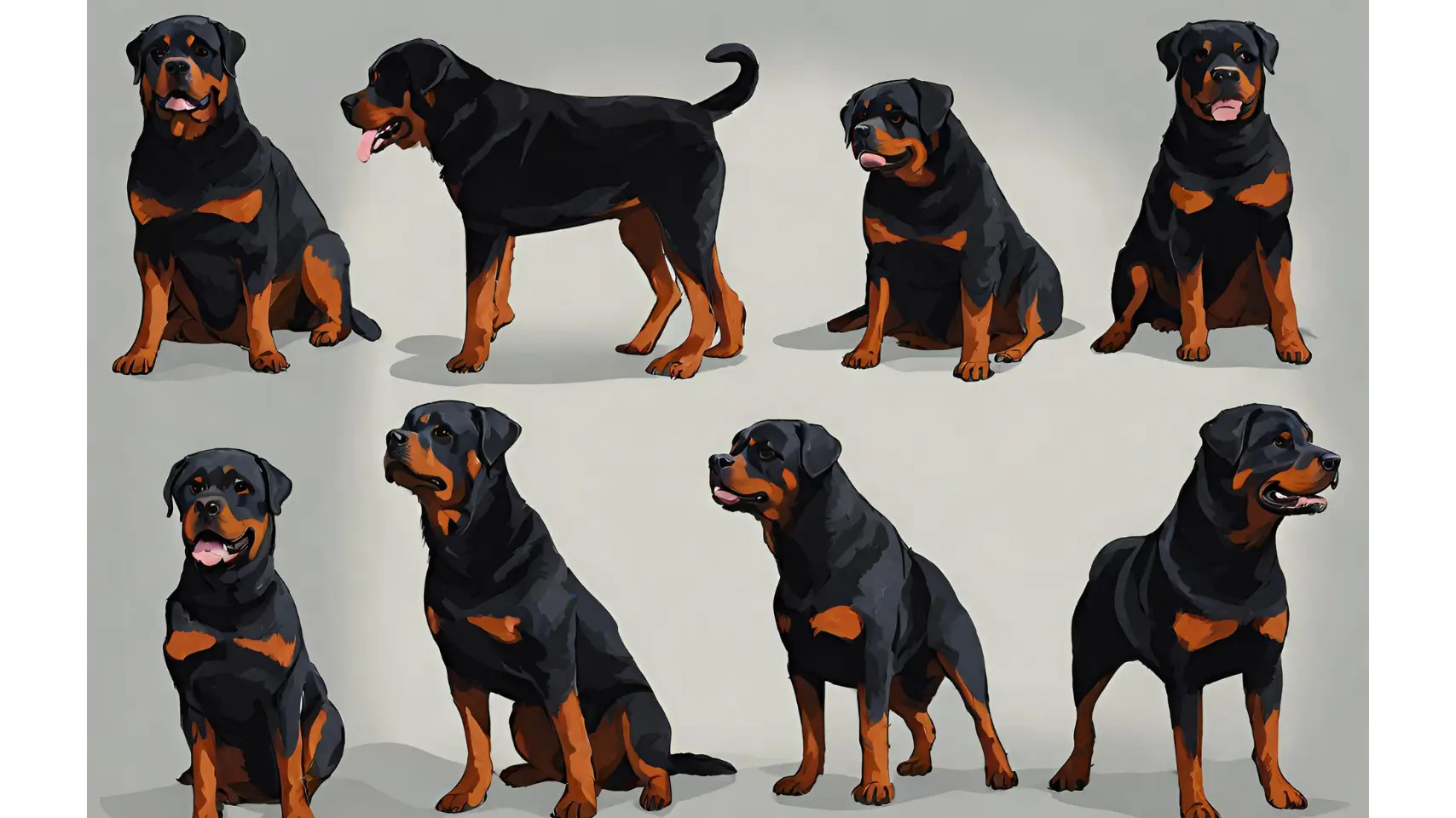Historically, tail docking was performed for practical reasons, but today, the necessity of this procedure is questioned. Many countries have imposed restrictions or outright bans on docking, recognizing it as unnecessary and potentially cruel. Health-wise, a Rottweiler with a tail does not face significantly higher risks of tail injuries, debunking a common argument for docking. Ethically, prioritizing the natural appearance and well-being of the dog is gaining support. Ultimately, embracing a Rottweiler with a tail reflects a move towards more humane and welfare-oriented dog ownership practices.
Table of Contents
Health and Welfare Implications
The debate over docking a Rottweiler’s tail often centers on the health and welfare of the dog. Proponents of docking argue that it prevents tail injuries, especially in active working roles. However, opponents highlight the pain and potential complications associated with the procedure, which is usually performed without anesthesia when the puppies are between 3 and 5 days old. The presence of a Rottweiler with a tail does not inherently lead to more injuries or health issues, challenging one of the primary arguments for docking.
Legal and Ethical Considerations
Legislation regarding tail docking varies globally, reflecting growing ethical concerns about the procedure. In many European countries, tail docking is banned or heavily regulated, recognizing the procedure as unnecessary and cruel. These legal frameworks encourage the acceptance and normalization of a Rottweiler with a tail, emphasizing animal welfare and ethical treatment over aesthetic preferences or historical practices.

The Aesthetic and Identity of a Rottweiler with a Tail
A Rottweiler with a tail presents a majestic appearance, showcasing the breed’s natural beauty. The tail adds an expressive element to the dog’s body language, offering insights into their mood and intentions. Advocates for leaving the tail intact argue that it contributes to the dog’s balance and overall physical harmony. As societal views shift towards more natural and humane treatment of animals, the appreciation for a Rottweiler with a tail grows, highlighting the breed’s elegance and strength in its most natural form.
Practical Considerations for Owners
Choosing whether to dock a Rottweiler’s tail involves practical considerations for prospective and current owners. For those involved in competitive shows, it’s essential to be aware of breed standards and regulations, which may favor docked tails. However, for family pets and working dogs not participating in such competitions, the decision should prioritize the dog’s well-being and quality of life. Educating oneself on the care requirements and behavioral aspects of a Rottweiler with a tail is crucial, to ensuring a happy and healthy relationship between the dog and its owner.
Conclusion
The decision to dock or not to dock a Rottweiler’s tail is complex, involving historical, health, legal, and ethical considerations. As society progresses towards prioritizing animal welfare and natural beauty, the sight of a Rottweiler with a tail becomes a symbol of this evolution. Whether choosing a Rottweiler with a tail or a docked one, the most critical factor is providing a loving, caring, and responsible home for these magnificent animals.
FAQs
Q: Does having a Rottweiler with a tail affect its behavior or temperament?
A: No, the presence or absence of a tail does not inherently affect a Rottweiler’s behavior or temperament. These traits are more influenced by genetics, upbringing, and training.
Q: Is tail docking necessary for the health of a Rottweiler?
A: There is no conclusive evidence that tail docking is necessary for a Rottweiler’s health. The practice was historically done for practical reasons, but today, a Rottweiler with a tail can lead a healthy and active life without increased risk of tail injuries.
Q: What are the legal requirements regarding tail docking in Rottweilers?
A: Legal requirements vary by country and region. Many European countries have banned or restricted tail docking, while other areas still allow it under specific conditions. It’s essential to check local laws and regulations.
Q: Can a Rottweiler with a tail participate in dog shows?
A: Participation rules depend on the specific dog show and governing body. Some organizations allow Rottweilers with tails, while others adhere to traditional breed standards favoring docked tails. Always verify the requirements of individual competitions.
Q: How should I care for a Rottweiler with a tail?
A: Caring for a Rottweiler with a tail involves regular grooming and checking for any signs of injury or infection, similar to tail care for other dog breeds. Ensuring a safe environment where the tail won’t get caught or injured is also advisable.
Rottweilers and cats, can they co-exist? Explore their potential for living together. This article dives into socialization, introductions, and responsible ownership for a harmonious multi-pet home.

